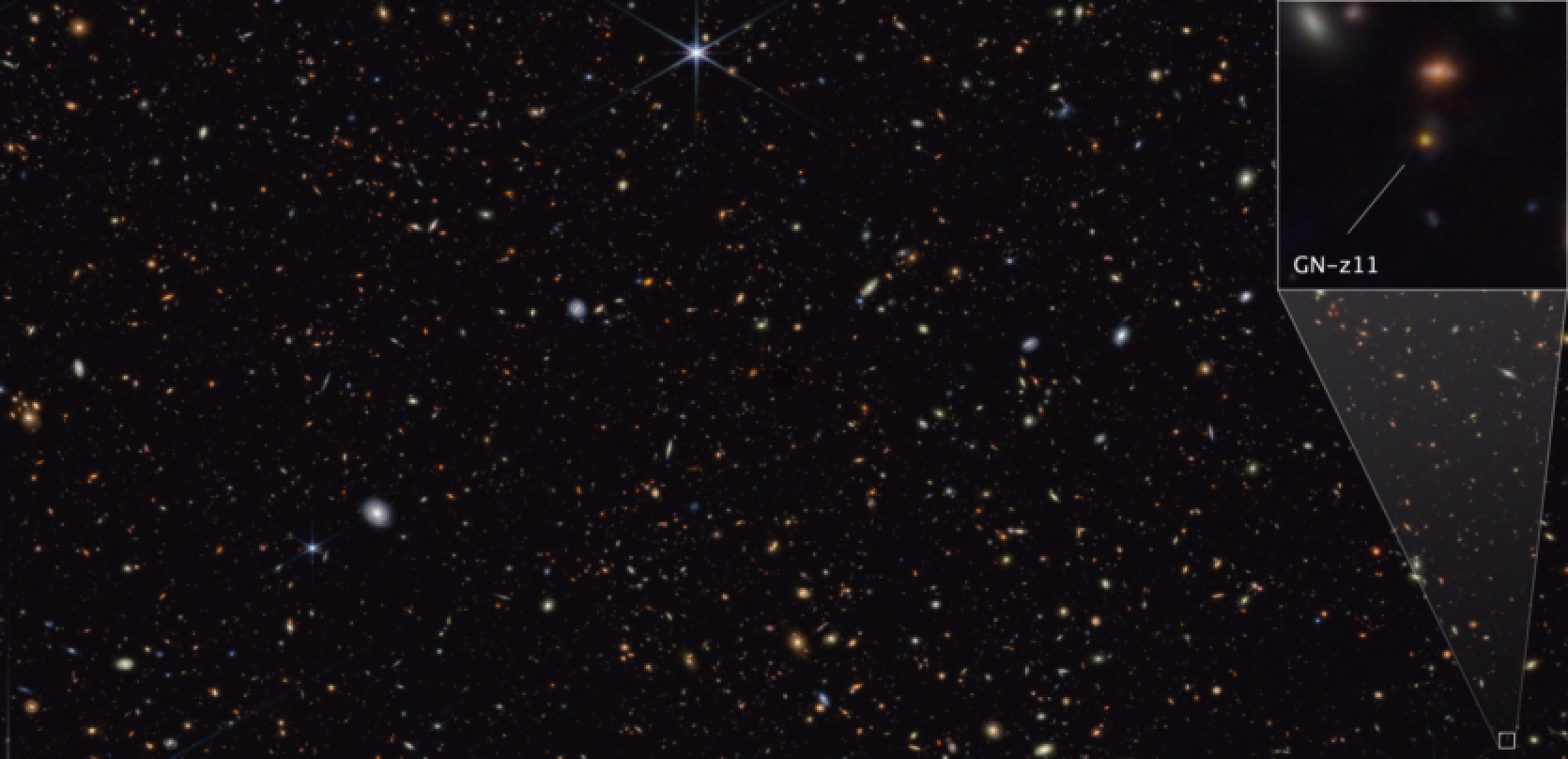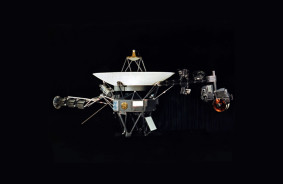For the first time, the galaxy GN-z11 was discovered by the Hubble telescope, and now its successor, the James Webb Space Telescope, has also found a supermassive black hole there (the most distant black hole known to us).
“We saw extremely dense gas, which is often found near supermassive black holes,” explained researcher Roberto Maiolino from the Cavendish Laboratory and Institute of Cosmology at Cambridge. “These were the first clear signs that GN-z11 contains a black hole that is accreting matter.”
The team also found signs of ionized chemical elements, which are usually observed near accretion disks of supermassive black holes, as well as powerful galactic winds caused by processes related to the intense growth of supermassive black holes. Together, this data suggests that GN-z11 contains a supermassive black hole with a mass of 2 million solar masses in a very active phase of material accretion (which explains its extreme brightness).
Another group studying data from the Webb Space Telescope's Near Infrared Spectrometer found a gas cloud of helium in the halo surrounding GN-z11.
“The fact that we see nothing else except helium indicates that this cloud must be relatively pristine,” says Maiolino. “This is what theories and simulations predicted for especially massive galaxies from these epochs - that pockets of pristine gas should remain in the halo, which can be destroyed and form Population III star clusters.”
The search for never-before-seen Population III stars - a hypothetical population of extremely massive and hot stars that formed at the very beginning of the Universe - is one of the most important goals of modern astrophysics. Their expected signature is the presence of ionized helium and the absence of chemical elements heavier than helium.
Source: NASA














Comments (0)
There are no comments for now